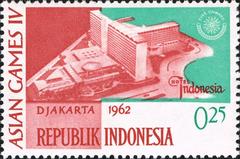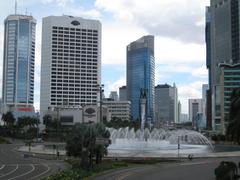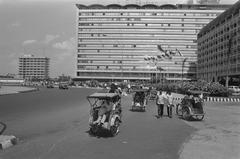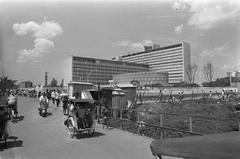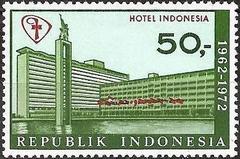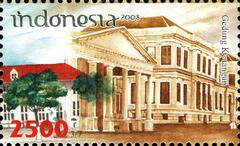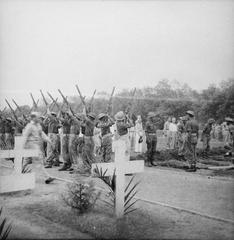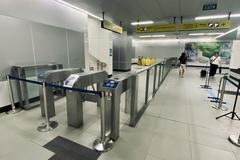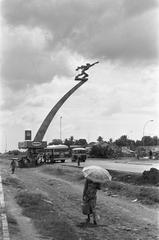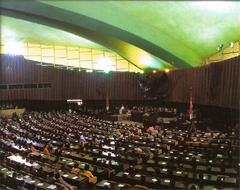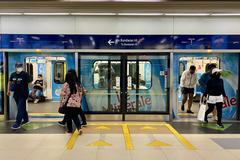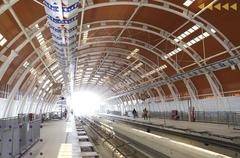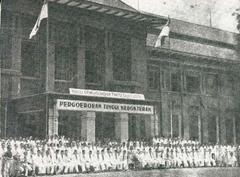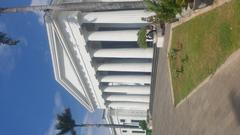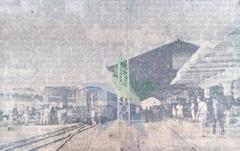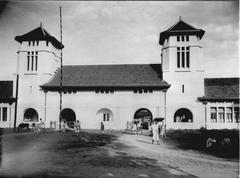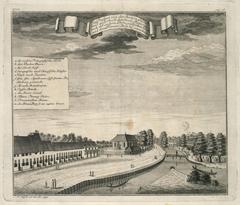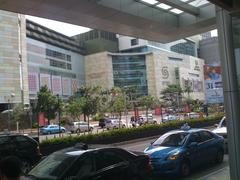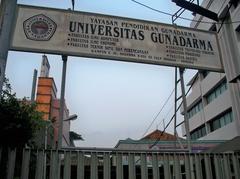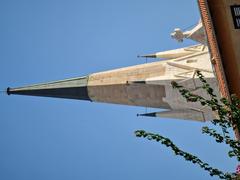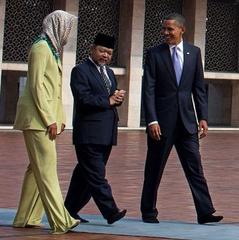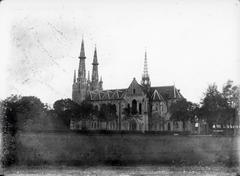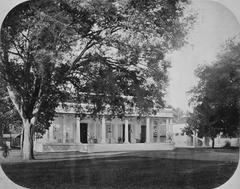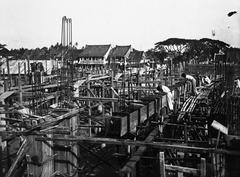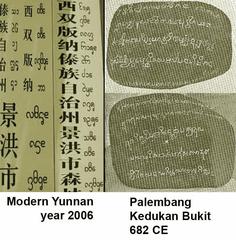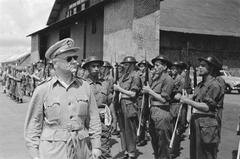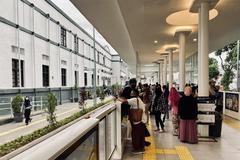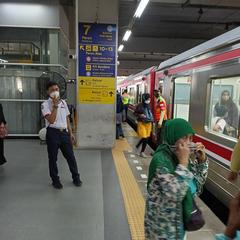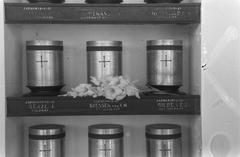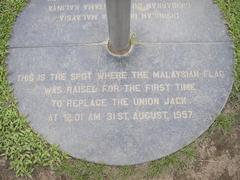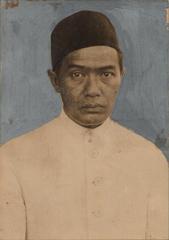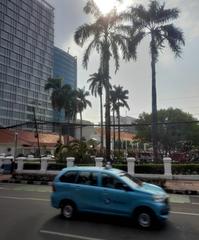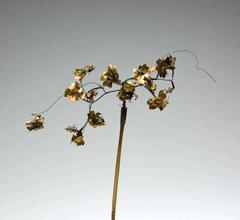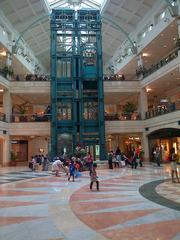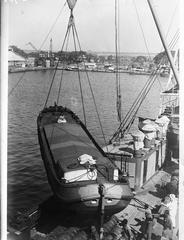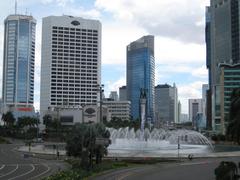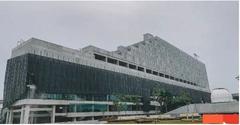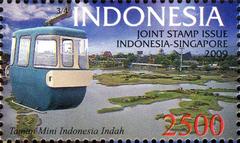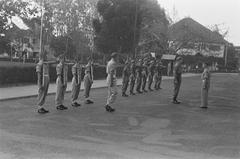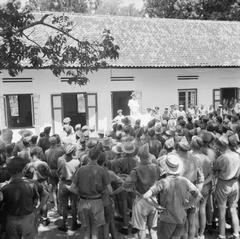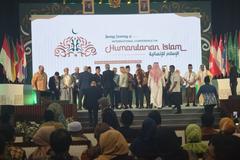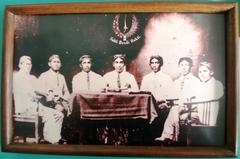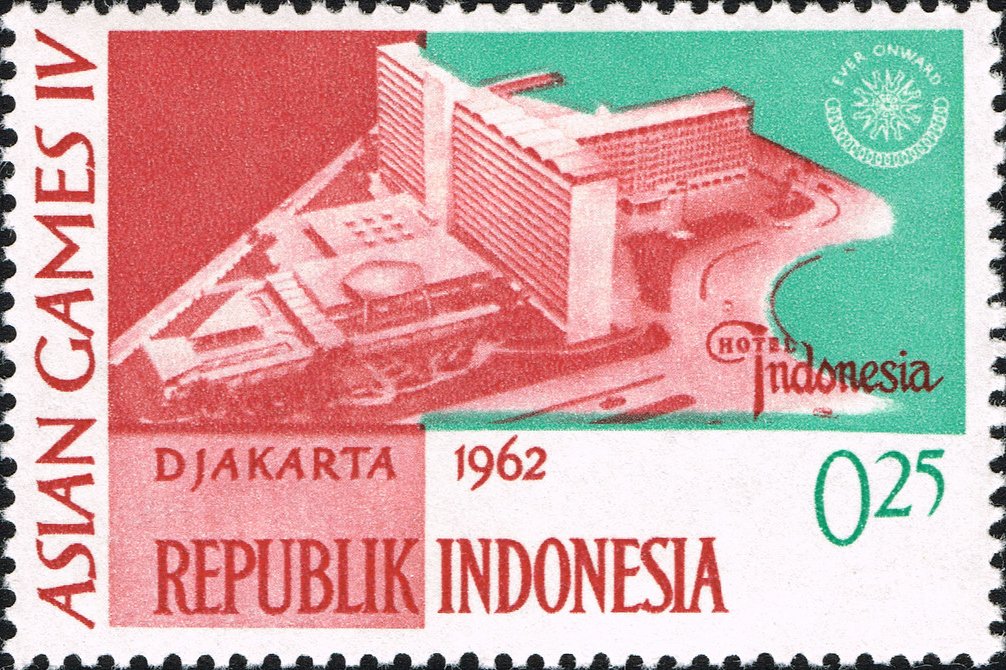
Hotel Indonesia Kempinski Jakarta Visiting Guide: Tickets, Hours, and Insider Tips
Date: 14/06/2025
Introduction
Hotel Indonesia Kempinski Jakarta is not just a luxury hotel—it’s a living monument symbolizing Indonesia’s post-independence aspirations, national pride, and cultural heritage. Originally opened in 1962 to coincide with the 4th Asian Games, this iconic landmark continues to anchor Jakarta’s urban and social landscape. This comprehensive guide explores Hotel Indonesia’s captivating history, architectural marvels, cultural significance, and provides detailed practical information on visiting hours, ticketing, accessibility, and tips for travelers keen to experience Jakarta’s most historic sites.
Table of Contents
- Introduction
- Historical Background
- Visiting Hotel Indonesia: Practical Information
- Notable Historical Artifacts and Features
- Role in National Identity
- Frequently Asked Questions (FAQ)
- Conclusion
- Call to Action
Historical Background
Origins and Vision
Hotel Indonesia was conceived under President Sukarno’s leadership as a bold statement of national progress and hospitality. Built to welcome athletes and dignitaries for the 4th Asian Games, it was intended to position Indonesia as a modern nation on the global stage. The hotel was part of a broader urban renewal plan that included development of major roads and public infrastructure, transforming Jakarta into an international metropolis (The Jakarta Post, Indonesia Design).
Architectural Design and Symbolism
Designed by Danish architect Abel Sorensen and his wife, Wendy Becker, Hotel Indonesia seamlessly blends modernist architecture with Indonesian motifs. The T-shaped design maximizes views of Jakarta, while traditional elements like batik patterns and regional woodwork infuse local identity into the modern structure. The hotel was Indonesia’s first to offer an elevator, marking a leap in technological advancement (The Jakarta Post, Indonesia Design).
Inauguration and Early Years
Hotel Indonesia opened on July 16, 1962, and was officially inaugurated by President Sukarno on August 5, 1962 (Wikipedia). It quickly became a hub for international guests, major state events, and social gatherings. Its location at Bundaran HI, beside the Selamat Datang Monument, further established its status as a symbol of modernity and hospitality (Grand Indonesia).
Cultural and Social Significance
Throughout the 1960s and 1970s, the hotel played a vital role in Jakarta’s cultural life. Venues like the Nirwana Supper Club hosted theatrical and musical performances, while the hotel served as a springboard for influential Indonesian artists and a site for major national events such as the Miss Indonesia pageant (Wikipedia). Its reputation as a meeting point for the nation’s elite further cemented its social significance.
Preservation and Heritage Status
Recognizing its historical value, the Jakarta government declared Hotel Indonesia a national cultural heritage site in 1993. This status ensures the preservation of its original artworks, furnishings, and significant artifacts, including inauguration memorabilia (Wikipedia). After periods of management change and renovation, the Kempinski Group restored the hotel between 2004 and 2009, reviving its grandeur while updating its amenities (Grand Indonesia).
Modern Era and Continuing Legacy
Reopened in 2009 as Hotel Indonesia Kempinski Jakarta, the hotel now features 289 luxury rooms and suites, multiple dining options, and state-of-the-art event spaces—while maintaining its historical and artistic heritage. Its location at Jl. M.H. Thamrin No. 1 places it at the crossroads of government, business, and leisure, surrounded by major shopping malls and historic landmarks (Indonesia Design). The hotel remains a key venue for national celebrations, public events, and a testament to Indonesia’s evolving identity (The Jakarta Post).
Visiting Hotel Indonesia: Practical Information
Visiting Hours
- Lobby and public areas: Open 24/7
- Restaurants: Typically 6:00 AM–11:00 PM
- Nirwana Supper Club: Usually 7:00 PM–midnight
For historical exhibits and guided tours, check availability or book in advance.
Tickets and Entry
- Lobby, restaurants, and public spaces: Free entry
- Exhibitions and guided tours: May require tickets or advance booking—contact the hotel or visit the official website for updates.
Guided Tours
- Tours highlighting the hotel’s history, architecture, and heritage can be arranged via the hotel concierge or reputable local operators. Tours may include access to heritage rooms and significant artifacts.
Accessibility
- The hotel provides full accessibility with ramps, elevators, and accessible restrooms. Visitors with special needs are advised to contact the hotel in advance for personalized assistance.
Nearby Attractions and Photographic Spots
- Bundaran HI & Selamat Datang Monument: Iconic roundabout and welcome statue
- Grand Indonesia & Plaza Indonesia: Premier shopping malls
- National Museum of Indonesia
- Jakarta Cathedral
The hotel and surrounding area offer excellent photo opportunities, especially at sunset with the illuminated Welcome Monument.
Travel Tips
- Best time to visit: Early mornings or evenings for fewer crowds and cooler temperatures
- Transportation: Easily accessible by taxi, ride-hailing services, and the Bundaran HI MRT station
- Safety: The area is generally safe, but standard travel precautions apply
Notable Historical Artifacts and Features
Within the hotel, guests can explore:
- Inauguration scissors used by President Sukarno
- Original cutlery from the opening ceremony
- Indonesia’s first elevator
- Heritage rooms and period artwork (Ottimmo Repository)
These features connect visitors with Indonesia’s journey to modernity.
Role in National Identity
Hotel Indonesia was envisioned as a beacon of Indonesia’s independence and cosmopolitan ambitions. As the nation’s first five-star hotel, it stands for unity, progress, and cultural pride—values that remain central to its identity today. The hotel continues to host annual events and exhibitions, commemorating its place in the nation’s narrative (Ottimmo Repository, WhatsNewIndonesia).
Frequently Asked Questions (FAQ)
Q: What are the visiting hours?
A: The lobby and public spaces are open 24/7, restaurants operate from 6:00 AM–11:00 PM.
Q: Is there an entrance fee?
A: No, but some exhibitions or tours may require tickets.
Q: Are guided tours available?
A: Yes, bookable via the hotel concierge or local operators.
Q: Is the hotel accessible for people with disabilities?
A: Yes, with ramps, elevators, and accessible restrooms throughout.
Q: What are nearby historical sites?
A: Bundaran HI, Selamat Datang Monument, National Museum of Indonesia, Jakarta Cathedral, and major shopping malls.
Q: How do I get there?
A: Located at Jl. M.H. Thamrin No. 1, accessible by taxi, ride-hail, or Bundaran HI MRT.
Conclusion
Hotel Indonesia Kempinski Jakarta is a living testament to Indonesia’s journey from post-independence optimism to modern sophistication. Its blend of preserved heritage, architectural grandeur, and contemporary luxury makes it an essential destination for history enthusiasts, cultural explorers, and travelers seeking to experience Jakarta’s vibrant story. Plan your visit to immerse yourself in the legacy, artistry, and hospitality that define this national icon.
Call to Action
For more insights into Hotel Indonesia and other Jakarta historical sites, download the Audiala app for guided tours, insider tips, and exclusive content. Follow us on social media for the latest event updates and cultural highlights.
Featured Nearby Landmarks
Monumen Nasional (Monas): Jakarta’s Iconic Symbol
Monumen Nasional (Monas) is a must-visit monument standing 132 meters tall at Merdeka Square, symbolizing Indonesia’s independence. Visitors can enjoy panoramic city views from the observation deck and learn about the nation’s history at the onsite museum.
- Opening hours: Daily, 8:00 AM–3:00 PM
- Tickets: IDR 20,000 (Indonesians), IDR 30,000 (foreigners); children under 5 free
- Access: MRT (Bundaran HI), TransJakarta, taxis, and ride-hailing
- Facilities: Wheelchair accessible, cafés, souvenir shops, and parkland
(Official Monas Information - Jakarta Tourism)
Selamat Datang Monument at Bundaran HI
The Selamat Datang Monument is a beloved Jakarta landmark adjacent to Hotel Indonesia. Featuring two bronze figures welcoming visitors, it’s a symbol of the city’s hospitality and optimism.
- Visiting hours: 24/7 (best during daylight for safety and photos)
- Fees: None
- Access: MRT Bundaran HI, TransJakarta, taxis, pedestrian-friendly area
(Jakarta Tourism Official Site)
Summary & Visitor Recommendations
Hotel Indonesia Kempinski Jakarta is a destination that encapsulates Indonesia’s national pride, cultural richness, and architectural legacy. Its central location, preserved artifacts, accessible facilities, and proximity to other major sites make it a rewarding stop for all visitors. Whether you are a history buff, a cultural explorer, or simply seeking luxury hospitality, a visit here offers a comprehensive experience of Jakarta’s past and present.
For more details, tickets, and upcoming cultural events, consult the official Hotel Indonesia Kempinski Jakarta website. Enhance your journey by downloading the Audiala app for guided tours and travel tips.
Sources and Official Links
- Five Things to Know About the Historical Hotel Indonesia — The Jakarta Post
- A Luxury Heritage in the Heart of Jakarta — Indonesia Design
- Hotel Indonesia — Wikipedia
- Hotel Indonesia Kempinski Jakarta Anniversary Unifies Cultural Icons — Now Jakarta
- 62 Years of Legacy — Kempinski Press Room
- Hotel Indonesia Kempinski Overview — Kempinski
- Hotel Indonesia Kempinski Jakarta — Grand Indonesia
- Ottimmo Repository — Hotel Indonesia History
- WhatsNewIndonesia — Honouring Hotel Indonesia Kempinski Jakarta’s Historic Journey
- Jakarta Tourism Official Site
- Monas National Monument — Indonesia Travel
- Jakarta MRT Information
